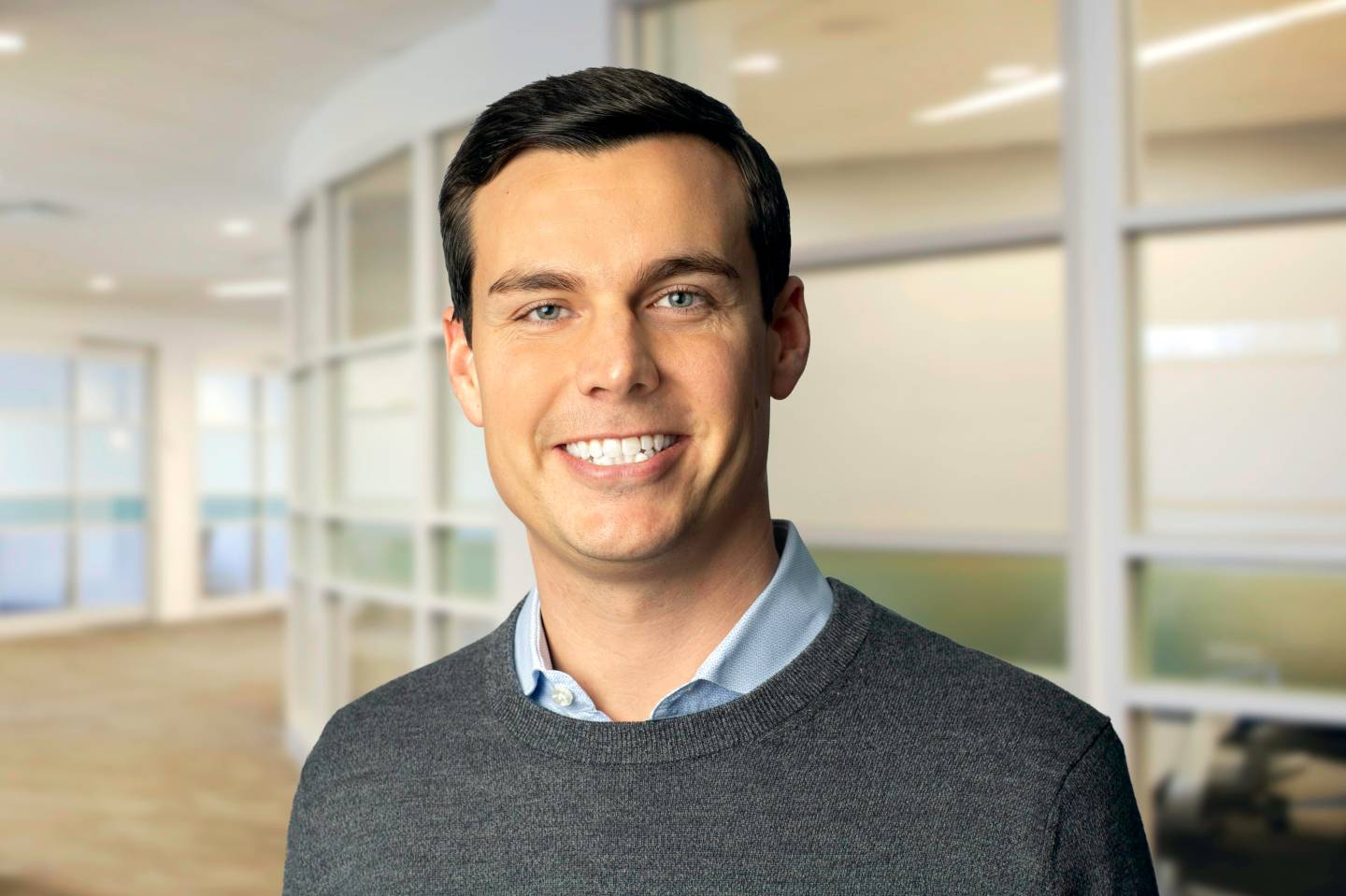Listen up, employers—your people want things that are good for business too. Just ask DJ Casto, executive VP and CHRO at Synchrony.
Last year, the consumer financial services firm centralized roughly 100 campus-hire interns at its HQ in Stamford, Connecticut. Synchrony, which codesigns employee offerings with the people who use them, also listened carefully to what those interns wanted.
That yielded a valuable discovery.
“The No. 1 benefit that they were looking for us to invest in, and it was important for them to join the company, was to have more dedicated therapists or wellness resources,” Casto tells me.
So Synchrony hired a full-time psychologist, in addition to the 22 wellness coaches it’s brought on over the past several years.
A certain group might push for such a benefit, but it’s used throughout the workforce, says Casto, whose company does credit card financing for partners such as Amazon, Lowe’s, and PayPal. “Typically what we find, because it’s codesigned with the employees, is the adoption cuts across the entire Synchrony ecosystem.”
Synchrony, which ranks No. 5 on the latest Fortune 100 Best Companies to Work For list, has good reason to heed team members.
“We always take a step back and say, ‘How are we helping them to be their best, both personally and professionally, to drive peak performance?’” Casto notes. “If that’s your anchor, then what are the suite of offerings that we need to provide to help them do that? And the first step in that is really intentional, active listening.”
One key listening mechanism is the annual employee survey conducted by Fortune partner Great Place to Work, which also does pulse surveys throughout the year. Anchoring the annual survey is an index that gauges trust between employees and the leadership team, Casto says: “Through the feedback that we get, we codesign a variety of benefits and support.”
To that end, Synchrony, which has 20,500 team members in the U.S. and Asia, takes an agile approach. For example, after hearing that many contact center associates want to stick around for the long haul, it began offering a 12-month tech apprenticeship program early last year.
But rather than go all in, Synchrony started small—with fewer than 10 people in the first cohort. All of them landed full-time roles.
The company launches such programs like a minimum viable product (MVP), Casto says, using a term from the startup world. “We want to make sure we get it right,” he explains. “Because the worst thing you can do is do an apprenticeship where you know the skill transfer isn’t working the right way, and then also we’re not seeing the translation to job placement.”
Casto would rather see a handful of folks succeed at first, creating a multiplier effect when it comes to employee interest. “And we, from a business perspective, can look back and say, ‘That ROI made sense,’” he says. “That investment that we made in the employee, it actually generated a really great hire for us in an area like cyber or AI or info security in general.”
Casto suggests that leaders get comfortable with active listening tools and channels, such as surveys and roundtable discussions. Synchrony holds a monthly town hall called Ask Us Anything that includes CEO Brian Doubles. “[Anyone at] any level in the company can ask us, as the leadership team, anything that they want across the business,” Casto says.
He also recommends going the agile, MVP route with new employee offerings.
“It might feel uncomfortable to not have it fully baked and all worked out,” Casto admits. “But you will garner a lot of trust with your workforce on just being completely honest about this: ‘We’re piloting this for 12 months. You’re going to help us codesign it. We’re going to have a lot of feedback loops along the way.’ They want to be a part of the solutioning, and oftentimes, they have the best answer.”
That’s giving credit where credit is due.
Nick Rockel
nick.rockel@consultant.fortune.com
IN OTHER NEWS
Bankers’ hours
For new recruits, banking can be a lucrative profession—until you do the math. Bank of America wants junior employees to say if bosses told them to underreport their hours, a ruse to avoid time off. That follows a Wall Street Journal investigation into overwork at the bank, which saw one ex-staffer reveal she was asked to keep quiet about toiling until 5 a.m. With AI poised to take over much of the drudgery that falls to junior bankers, such hazing rituals could soon go the way of the pocket calculator.
Winging it
Boeing’s trust issues continue. After identifying an electrical problem with 737s at its factory, the aircraft giant faces even more production delays, Will Daniel writes. That bad news comes after Boeing pled guilty to fraud in the wake of several accidents—including two 737 Max crashes that killed 346 people. But as losses mount, stock analysts still see a flight path for the troubled company, now piloted by new CEO Kelly Ortberg. In the meantime, watch out below.
Food fight
Kroger shoppers can’t trust that they’ll pay fair prices for grocery essentials, according to Elizabeth Warren. The U.S. Senator cowrote a letter to Rodney McMullen, CEO of the supermarket titan, charging that its shift to electronic shelving labels could usher in “dynamic” pricing—a.k.a. price gouging. Though Kroger denies any such plan, companies have been moving away from set prices for a while, as Uber customers know all too well.
Fake jobs
Everyone’s using AI to write their CV and cover letter, and it’s driving recruiters up the wall. Besides having to sift through piles of highly polished job applications that are more style than substance, those gatekeepers are getting hit with fake work experiences, Prarthana Prakash explains. As quality candidates get lost in the shuffle, AI screening tools aren’t much good at picking winners either. Well, at least recruiters will still have a job—doing real job interviews.
TRUST EXERCISE
“Scammers have only become more sophisticated over time, stealing tens of billions from Americans annually, with the emergence of artificial intelligence (AI) exacerbating the problem. But one type of fraud in particular—elder real estate fraud and financial exploitation—has flown mostly under the radar, rising in recent years as the average price of homes has increased.
It is time to reverse this trend. State and federal governments must work collaboratively with the private sector toward a solution before more older adults fall victim.
The Federal Bureau of Investigation’s (FBI) Internet Crime Complaint Center (IC3) found that nearly 1,500 Americans ages 60 and older reported losing a total of $65 million in real estate scams last year. Overall, there was a 14% increase in elderly victims filing complaints and the Federal Trade Commission (FTC) reported that adults over age 60 lost over $1.6 billion to all types of scams last year.”
Those are some scary numbers from Elizabeth Blosser, VP of Government Affairs for the American Land Title Association (ALTA). Older Americans make prime targets for financial scams, Blosser notes. Less likely than younger people to report suspected fraud, they also have more dough to steal.
Elder real estate fraud and financial exploitation take many forms, Blosser explains, such as signature forgery and pressure to sign documents. To make things even worse, the perpetrators are often friends, relatives, or advisors. Victims can end up losing their life savings and retirement funds, as well as their home.
States and the feds should step up legislation and enforcement that protect older people from such schemes, Blosser maintains. At the state level, education about deed theft would help too. Blosser also calls on the real estate industry to share resources that raise awareness of fraud and exploitation. Hopefully, the result is that Americans of a certain age feel safe in their own homes.












